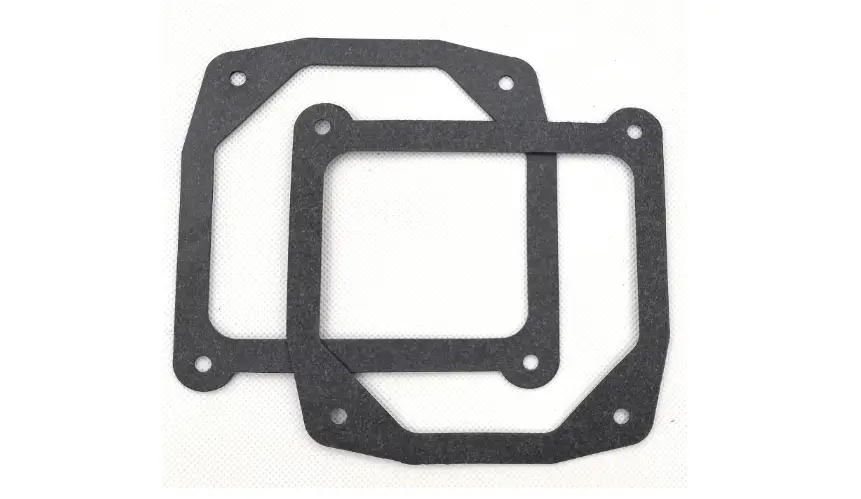Valve cover gaskets are generally not recommended for reuse. Over time, they can become brittle, lose their shape, or develop cracks, compromising their ability to seal properly. While some materials like silicone may be more durable, it’s usually safer to replace the gasket to prevent oil leaks and ensure optimal engine performance.
Valve cover gaskets play a critical role in the proper functioning of an engine by sealing the valve cover to the cylinder head. This prevents oil leaks, which could otherwise lead to engine damage and reduced performance. Given their importance, many vehicle owners and mechanics often wonder if valve cover gaskets are reusable.
Contents
Can Valve Cover Gaskets Be Reused?
The reusability of valve cover gaskets depends on several factors, including the material of the gasket, its condition after removal, and the specific application or vehicle model.
1. Material Considerations
- Cork Gaskets: Cork gaskets are generally not reusable. When a cork gasket is compressed during installation, it conforms to the surfaces it seals, but this compression is permanent. Once removed, a cork gasket is unlikely to provide a reliable seal if reused, as it may no longer have the same compressive properties.
- Rubber Gaskets: Rubber gaskets can sometimes be reused, but this depends on their condition after removal. If a rubber gasket is still pliable, free of cracks, and has maintained its shape, it might be possible to reuse it. However, rubber gaskets can harden and become brittle over time, especially when exposed to high engine temperatures. Reusing a hardened or damaged rubber gasket is not advisable.
- Silicone Gaskets: Silicone gaskets are generally more durable than rubber or cork gaskets and can sometimes be reused. However, even silicone gaskets are not immune to wear and tear, and they should be inspected carefully before reuse. If there are any signs of damage, deformation, or loss of elasticity, the gasket should be replaced.
2. Condition of the Gasket
When considering reusing a valve cover gasket, it’s crucial to inspect its condition thoroughly:
- Cracks or Tears: Any visible cracks, tears, or other signs of damage indicate that the gasket should not be reused.
- Compression Set: This refers to the degree to which the gasket has permanently deformed after being compressed. If the gasket has flattened out significantly or has lost its original shape, it will likely not seal properly if reused.
- Oil Saturation: Gaskets that have become heavily saturated with oil may have lost their ability to seal effectively, especially if the oil has degraded the material over time.
- Hardened or Brittle Areas: Gaskets that have hardened or become brittle are more likely to crack or fail if reused, particularly when exposed to the high temperatures of an engine.
3. Vehicle Specificity and Application
In some cases, the design of the engine and the specific application may allow for gasket reuse. For example, in low-stress applications or engines with particularly well-designed valve covers and gaskets, reuse might be more feasible. However, for most vehicles, especially those with high-performance engines or those subject to extreme conditions, it’s generally safer to replace the gasket.
Why Replacing a Gasket is Often the Better Option
Even if a gasket appears to be in good condition, replacing it is often the more reliable option for several reasons:
- Preventing Leaks: A new gasket ensures a better seal, reducing the likelihood of oil leaks, which can lead to engine damage or decreased performance.
- Longevity: New gaskets are less likely to fail prematurely, providing peace of mind that your engine is well-protected.
- Cost vs. Risk: The cost of a new valve cover gasket is relatively low compared to the potential damage that could result from a failed gasket. Given this, it’s often not worth the risk of reusing an old gasket.

Frequently Asked Questions
Here are some FAQs about the valve cover gaskets –
Can I use gasket sealant to reuse a valve cover gasket?
While gasket sealant might help in some cases, it’s not a guaranteed fix. It’s generally better to replace the gasket entirely rather than relying on sealant to compensate for a compromised gasket.
Can I reuse a valve cover gasket if it looks fine?
Even if a gasket appears to be in good condition, it’s safer to replace it. Gaskets can degrade in ways that aren’t immediately visible, such as becoming brittle or losing elasticity.
What happens if I reuse a damaged valve cover gasket?
Reusing a damaged gasket can lead to oil leaks, which may cause engine damage, decreased performance, and, in severe cases, engine failure.
How often should valve cover gaskets be replaced?
Valve cover gaskets typically last between 50,000 to 100,000 miles, but this can vary based on the vehicle and driving conditions. They should be inspected regularly and replaced if there are signs of wear or damage.
Are all valve cover gaskets made from the same material?
No, valve cover gaskets can be made from cork, rubber, or silicone, each with different properties affecting their durability and reusability.
Conclusion
While it may be tempting to reuse a valve cover gasket, especially if it appears to be in good condition, it’s generally advisable to replace it. The reusability of a gasket depends on its material, condition, and the specific application, but in most cases, the risks of reusing a gasket outweigh the benefits. By opting for a new gasket, you ensure a better seal, reduce the likelihood of leaks, and protect your engine from potential damage.
When working on your engine, it’s always better to err on the side of caution and invest in new gaskets rather than risk the potential consequences of reusing an old one.